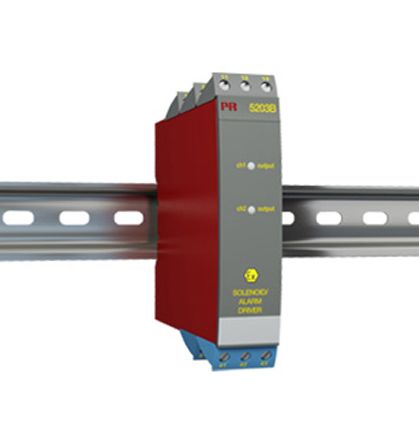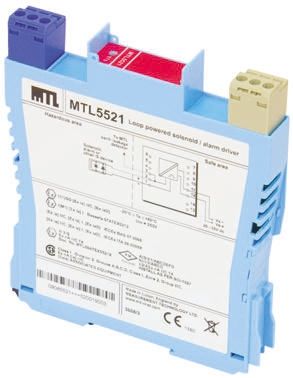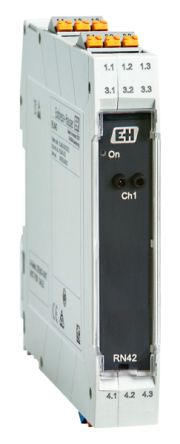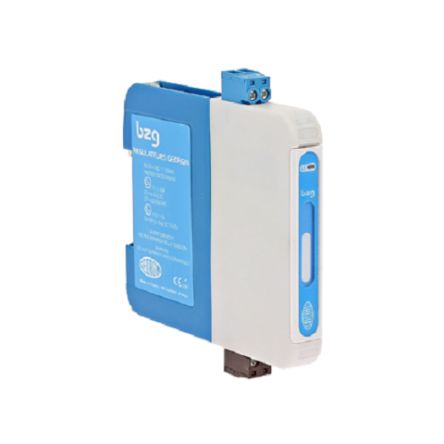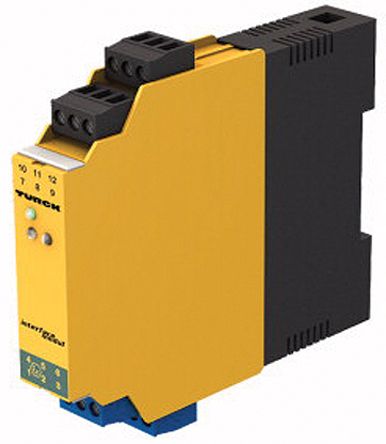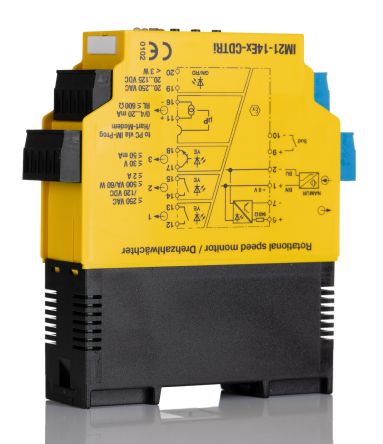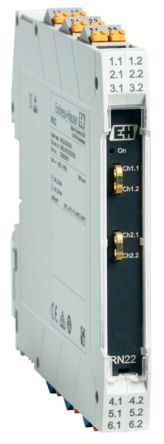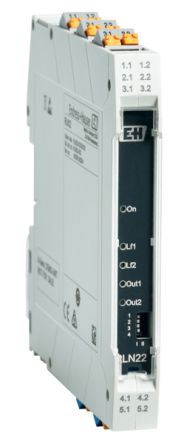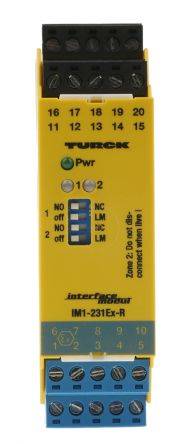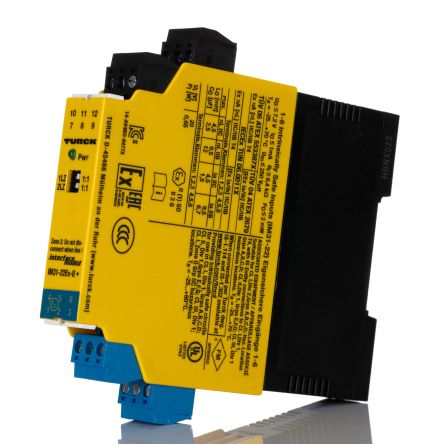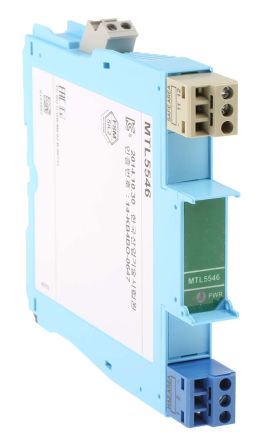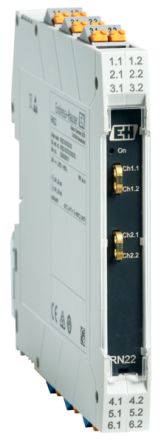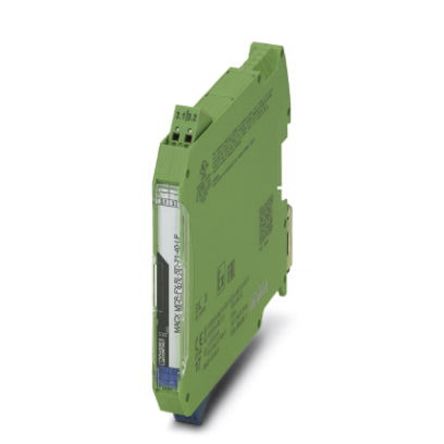- Automation & Control Gear
- Cables & Wires
- Enclosures & Server Racks
- Fuses & Circuit Breakers
- HVAC, Fans & Thermal Management
- Lighting
- Relays & Signal Conditioning
- Switches
- Batteries & Chargers
- Connectors
- Displays & Optoelectronics
- ESD Control, Cleanroom & PCB Prototyping
- Passive Components
- Power Supplies & Transformers
- Raspberry Pi, Arduino, ROCK, STEM Education & Development Tools
- Semiconductors
Zener & Galvanic Barriers
Zener and galvanic barriers are electrical protection devices used in hazardous or explosive environments to prevent the ignition of flammable gases, vapours, or dust. These signal barriers are commonly employed in industrial settings such as oil refineries, chemical plants, and mining operations.
What are Zener Barriers?
A Zener barrier is an intrinsically safe device used to limit electrical energy and prevent the transfer of excess voltage or current from the non-hazardous area to the hazardous area. It is also referred to as a Zener safety barrier. It employs a Zener diode, which is a special type of diode that conducts electricity in reverse bias when the voltage across it exceeds a specific value known as the Zener voltage. By utilising the Zener effect, these barriers regulate the energy entering the hazardous area below the level that could cause ignition. Zener barriers are commonly used to protect intrinsically safe circuits and devices, such as sensors, transmitters, and switches.
What are Galvanic Barriers?
A galvanic barrier, also known as an isolator or isolation barrier, is another type of protection device used in hazardous environments. It provides electrical isolation between the hazardous area and the non-hazardous area, preventing the flow of direct current (DC) or low-frequency alternating current (AC) while allowing the transmission of signals or data. Galvanic barriers utilise transformers or optocouplers to provide the necessary isolation. These barriers are commonly employed to protect instruments, control systems, and communication interfaces from potentially hazardous electrical faults, surges, or short circuits.
Types of Zener Barriers for Intrinsic Safety
There are two main types of Zener barriers, each offering different levels of protection and functionality for intrinsic safety applications:
Single-Stage Zener Barriers
Single-stage Zener barriers provide basic protection by limiting the voltage and current that can pass from a hazardous area to a safe area. They utilise Zener diodes to shunt excess energy, effectively preventing sparks and ensuring intrinsically safe operation in potentially explosive atmospheres.
Multi-Stage Zener Barriers
Multi-stage Zener barriers incorporate multiple stages of protection, typically including a combination of Zener diodes, resistors, and fuses, to provide enhanced safety and reliability in demanding industrial environments. They offer a higher level of isolation and protection for critical applications with significant risk of electrical hazards.
Types of Galvanic Isolation Barriers
Galvanic isolation barriers prevent electrical current flow between two circuits while allowing signal transmission, ensuring safety and preventing ground loops. They come in various types, each with distinct advantages:
Transformer-Based Barriers
Transformer-based barriers use magnetic coupling to achieve galvanic isolation, providing high-voltage isolation and noise rejection capabilities. They are well-suited for applications requiring robust isolation and signal integrity, such as industrial automation and medical equipment.
Optocoupler Barriers
Optocoupler barriers utilise LEDs and phototransistors to achieve galvanic isolation, offering good noise immunity and high-speed signal transmission. They are commonly used in applications where electrical isolation and fast data transfer are required, like digital communication interfaces and power supplies.
Fibre-Optic Barriers
Fibre-optic barriers employ optical fibres to transmit signals, providing complete electrical isolation and immunity to electromagnetic interference. They are ideal for applications in harsh environments or where high-voltage isolation is critical, such as in power plants and telecommunication systems.
Industrial Applications of Zener and Galvanic Barriers
These signal barriers are commonly used when electrical circuits and equipment need to be protected in hazardous environments, such as:
- Process Control Systems: Zener and galvanic barriers are widely used in process control systems found in industries such as oil and gas, chemical manufacturing, and pharmaceuticals. They protect sensors, transmitters, and other control devices located in hazardous areas, ensuring safe and reliable operation.
- Industrial Automation: In industrial automation applications, Zener and galvanic barriers protect programmable logic controllers (PLCs), distributed control systems (DCS), and other automation equipment. These barriers safeguard the communication interfaces and control signals between the hazardous and non-hazardous areas.
- Instrumentation and Measurement: Zener and galvanic barriers are crucial for protecting measurement and instrumentation equipment used in hazardous environments. This includes devices such as pressure transmitters, temperature sensors, level indicators, and flow meters. The barriers ensure accurate data acquisition and control without posing a risk of ignition.
- Power Distribution: Zener and galvanic barriers play a role in hazardous area power distribution systems. They are used to isolate and protect electrical circuits that supply power to equipment located in potentially explosive atmospheres, preventing the transfer of excessive voltage or current.
- Communication and Networking: Zener and galvanic barriers are used to safeguard communication and networking equipment, such as fieldbus systems, Ethernet switches, and wireless devices. They protect against electrical faults and potential ignition sources that could occur during data transmission.
The Leading Supplier and Distributor of Zener and Galvanic Barriers
RS is a trusted supplier and distributor of Zener and galvanic barriers, featuring industry-trusted brands like GEORGIN, Endress+Hauser, Phoenix Contact, and more. We offer competitive prices and reliable products from top manufacturers to ensure the safety and reliability of your hazardous area circuits.
Explore the new look of the category page
Related links
- Eaton 1 Channel Zener Barrier Digital Input, ATEX
- Eaton 2 Channel Zener Barrier Digital Input, ATEX
- Eaton 1 Channel Zener Barrier Analogue Output, ATEX
- Eaton 1 Channel Zener Barrier Digital Output, ATEX
- Eaton 2 Channel Zener Barrier ATEX
- Idec 6 Channel Zener Barrier Relay Output, ATEX
- Eaton 1 Channel Zener Barrier Current Input, ATEX
- Idec 1 Channel Zener Barrier Relay Output, ATEX
